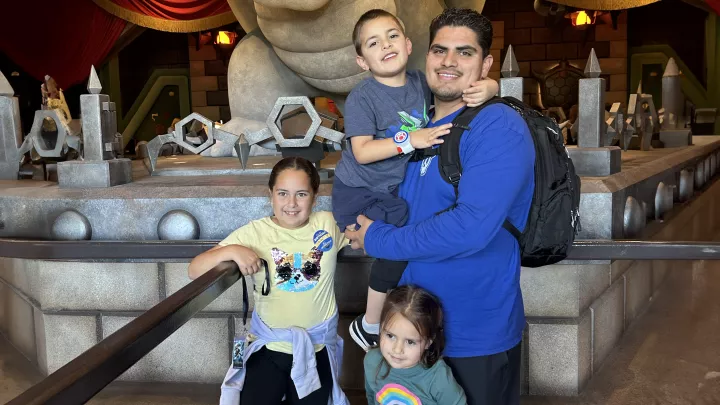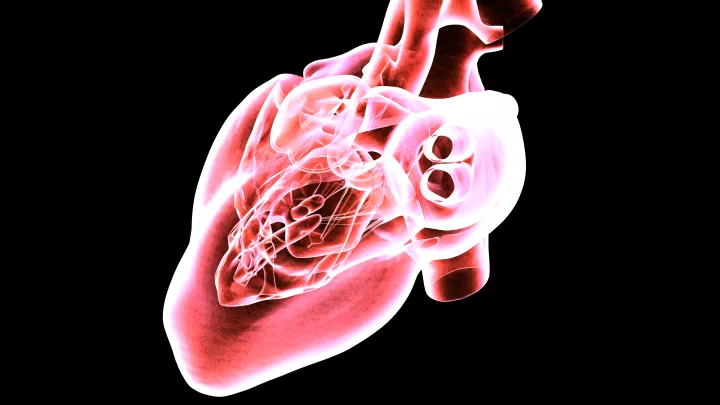
Heart Checkups Advised for Kids Who Play Sports
Key Takeaways:
- Sudden cardiac arrest is a leading cause of death among young athletes.
- Pre-participation heart screenings are advised for athletes ages 12 and above.
- Cardiac tests can detect 99% of abnormalities.
- Heart defects don’t prohibit kids from playing sports.
The fact that sudden cardiac arrest is a leading cause of death in young athletes seems illogical, provoking an obvious question: Why are the youngest, fittest and strongest among us vulnerable to a life-threatening heart event?
“That’s the point,” says Children’s Hospital Los Angeles cardiologist Paul Kantor, MBBCh, MSc, FRCPC. “It can be something you were born with that didn’t get noticed, or something that was acquired more recently in your own personal medical experience.”
Dr. Kantor, Chief of Cardiology at CHLA and co-Director of the hospital’s Heart Institute, one of the country’s leading pediatric heart centers, says a young athlete can suffer cardiac arrest because of a heart condition that stays hidden and dormant until heavy exertion from a sports activity sets it off. He names several genetic heart defects that can trigger a cardiac event, including the most common, hypertrophic cardiomyopathy, an excessive thickening of the heart muscle, and anomalous origin of the coronary arteries, a weakness in the structure of the arteries that disrupts blood flow to the heart during exercise. An example of an acquired abnormality is myocarditis, an inflammation of the heart that can develop from a viral illness.
“Few of these possible causes will necessarily cause symptoms during regular, day-to-day activities,” Dr. Kantor says, “but may show up during extreme sporting activity, where the heart is under a lot of stress. We’re talking about abnormalities that are very subtle, but can under certain circumstances result in irregular heartbeat rhythm or a sudden abnormality of heart function.”
Medical screenings for young athletes
The need to catch one of these dangerous heart defects before it does any catastrophic harm leads the specialists in the Heart Institute, along with those at the American Heart Association, to recommend young athletes visit their pediatrician to be screened for any cardiac irregularities before participating in a competitive sport.

Ideally, Dr. Kantor says the assessment should include a comprehensive personal history intake, a physical exam and an electrocardiogram (ECG), a test that checks for an abnormal heart rhythm. If there is any sign of an abnormality, the pediatrician can refer the patient to a heart specialist for more workup, at which point the cardiologist may request an echocardiogram to get a better view of the heart and coronary arteries, or an exercise test to measure how well the heart performs when stressed.
The risk for sudden cardiac arrest among young athletes is exceedingly low, but it’s not 1 in a million. Dr. Kantor says most estimates put it at somewhere around 1 in 50,000 per year. “We try to emphasize the need for screening in competitive sports so that the individual risk, as low as it probably is, can be minimized,” he says.
Therein, however, is an unavoidable problem. Dr. Kantor grades the ability of a screening assessment with an ECG to identify a heart abnormality at around 80% to 90%. That leaves a significant portion of heart disorders undetected, combined with findings that will turn out to be false positives upon further testing. “It’s not terrible, but it’s not anywhere near 100% accurate,” Dr. Kantor says.
Echocardiograms are more sensitive, reaching 99% accuracy at exposing structural problems within the heart. But availability and cost can be obstacles to their widespread use—and even if those barriers are removed, the detection rate won’t ever be perfect.
“It still wouldn’t be 100% because some abnormalities of cardiac rhythm that can occur during sporting activities cannot be excluded on primary screening,” Dr. Kantor says. “Therefore, we will never be able to completely exclude the possibility of an acute cardiac event occurring on a sports field.”
Balancing risk vs. reward
But any amount of prevention is worthwhile, so a pre-participation heart screening is advised for competitive sports participation in ages 12 and above, Dr. Kantor says.
Dr. Kantor and his colleagues often see kids who are referred to the Heart Institute after a checkup by their pediatrician flags a heart issue that could pose a risk during intense exertion. Does that rule them out of playing competitive sports?
It used to, Dr. Kantor says, as often a diagnosis of a heart abnormality such as hypertrophic cardiomyopathy would force a ban on sports participation. However, the current medical response now weighs the real risks to the individual patient versus the many benefits of participation, making every effort to avoid removing kids from playing sports.
“Our understanding of this field is evolving quite quickly, to a posture where we are more likely to have supervised participation or participation at a level that’s considered safer for such children,” Dr. Kantor says. “Because we are generally opposed to a blanket exclusion of children from sports.”
The goal is determining a safe middle ground that acknowledges a level of risk, but one small enough to allow a young athlete to stay on the field, or court, or ice.
“That means,” Dr. Kantor says, “we have to engage in a process of risk assessment and shared decision making with the family as to what is acceptable risk and what is acceptable sporting activity.”


